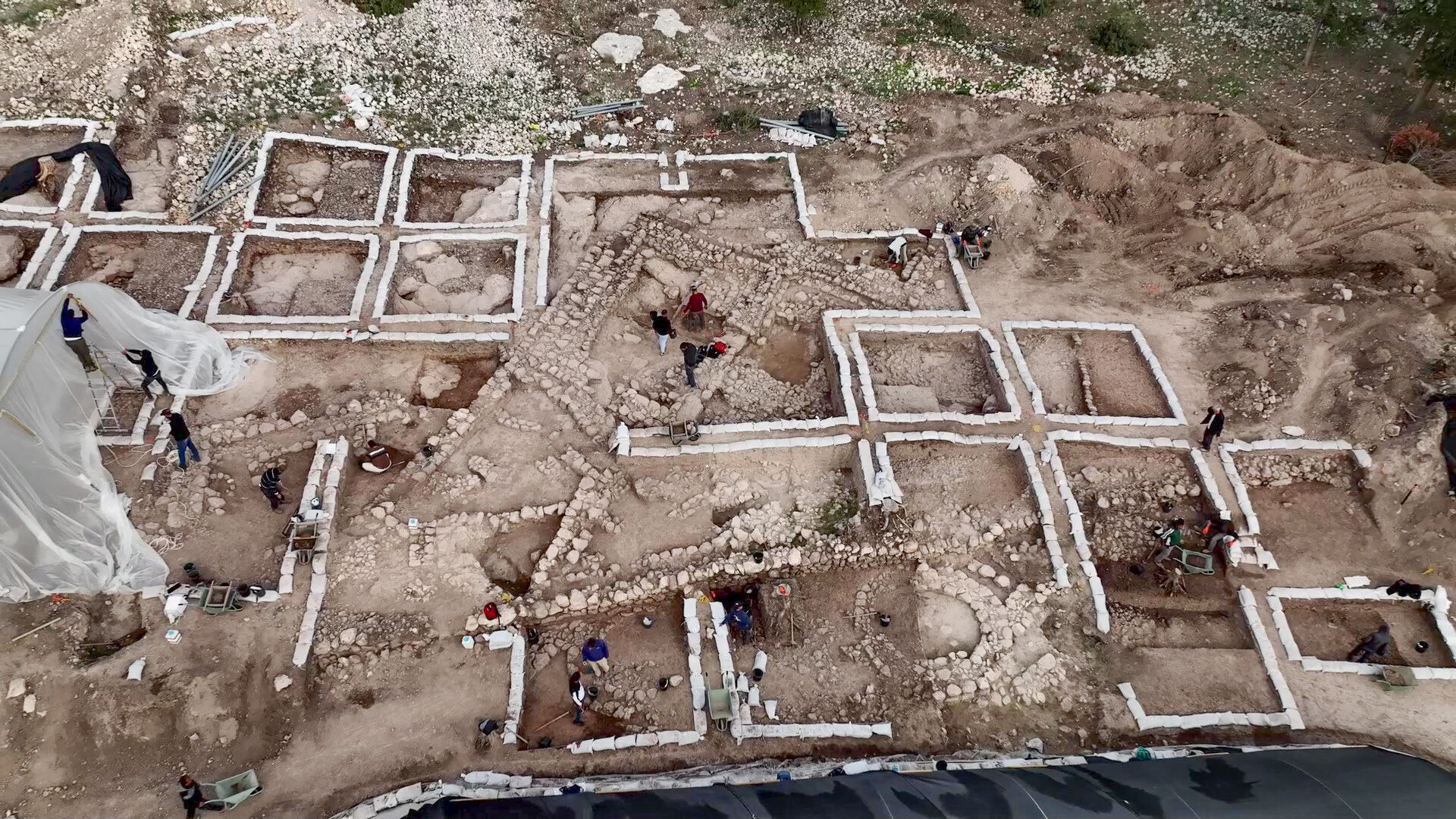An Early Bronze Age settlement has been discovered at the site of Hurvat Husham, on the outskirts of Beth Shemesh, the Israel Antiquities Authority (iaa) announced this week. An impressive public building—most likely a cultic center—was found at the settlement during salvage excavations in preparation for the westward expansion of Beth Shemesh’s modern-day industrial zone.
Excavation directors Ariel Shatil, Maayan Hemed and Danny Benayoun stated in a press release issued Tuesday: “The size of this structure that we uncovered, its broad walls, the benches inside it and other variables indicate that it is an important and exceptional structure with a public function—perhaps a temple.”

“We know almost no public buildings in Israel from this ancient period and earlier,” the researchers stated. “Comparison with the few known buildings of this type produces the conclusion that this is probably one of the earliest temples ever discovered in the Judean Lowlands.”
This discovery is another key piece of the puzzle of the land of Israel’s early urbanization. The Early Bronze Age period spans the late fourth to third millennium b.c.e.

Pottery kilns and about 40 preserved and intact vessels were discovered at the site, among which are many tiny vessels which apparently served a symbolic use rather than a domestic one. The kilns are some of the earliest ever found in Israel.
Large standing stones arranged in rows were also discovered near the public building. According to Dr. Yitzhak Paz, Early Bronze Age expert at the iaa:
The standing stones were erected even before this enclosed public building was erected. Their presence promises to be instructive of the socio-political process involved in the founding of the cultic service in Hurvat Husham—it seems that originally there was an open cultic activity area for the general public which then transformed into ritual activity in an enclosed compound with more controlled access. This development process on the site, along with other processes, attests to an increase in social complexity. This is one of the indicators of urbanization development in Israel during the Early Bronze Age.
iaa director Eli Eskosido summarized the findings: “The land of Israel, due to its nature and its geographical location, was a fertile ground for the development of ancient civilizations. The Hurvat Husham site, uncovered by the researchers of the Israel Antiquities Authority, reveals another important piece in the puzzle of urban development in our region.”

